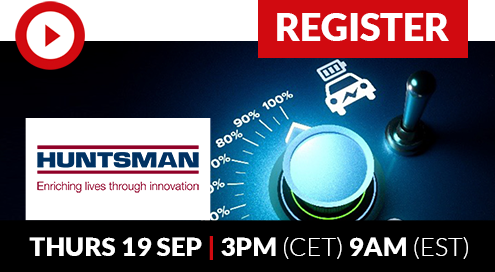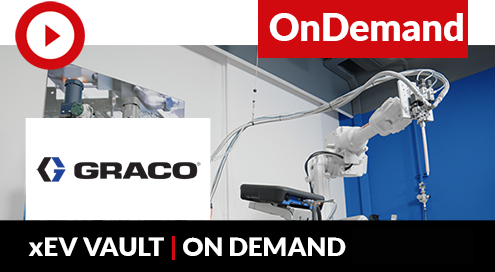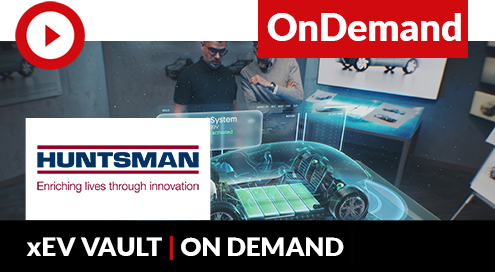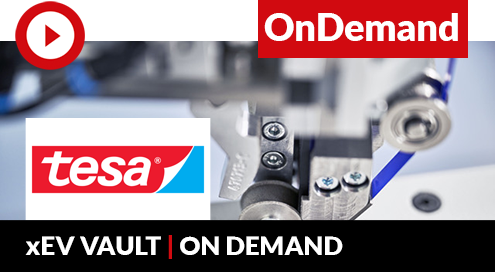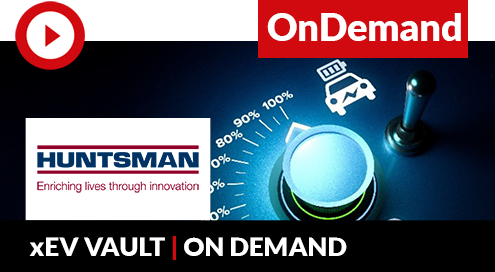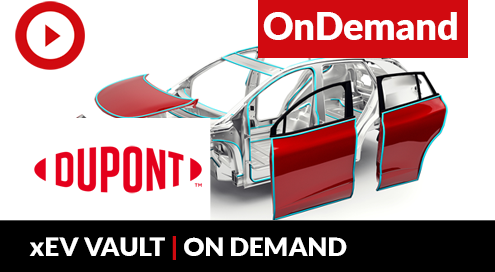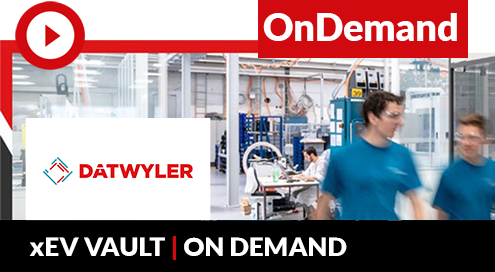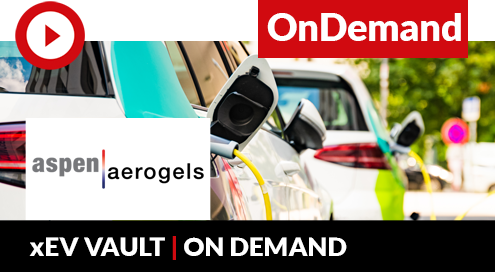
 Featured BEV TECHTALKS 2024
Featured BEV TECHTALKS 2024
Improving Circularity & Reducing The Carbon Footprint Of Automotive Foams & Composites
Irina Bolshakova , Global Automotive Marketing Director, Huntsman Polyurethanes
Diane Langer, Global Technology and Innovation Director, Huntsman Polyurethanes
Guest Speaker
Changes In Coolant Legislation: Drivers And Timelines For Compliance
Sander Clerick , Development Chemist E-Mobility, Arteco Coolants
Guillaume Vanpeteghem , E-Mobility lead, Arteco Coolants
Find out more
-
Low Electrical Conductive Water-Glycol Cooling As A Solution to Safety-Driven Coolant Legislation Changes
-
Understand the evolving regulatory landscape governing coolant use in automotive applications
-
Navigating complex and varying international regulations to ensure compliance while maintaining performance standards
-
Analyze the impact of coolant legislation changes on the design and functionality of battery cooling systems for global Original Equipment Manufacturers (OEMs)
-
Adapting to new regulatory requirements without compromising the efficiency, safety, and longevity of battery systems
-
Explore the broader implications of coolant legislation on OEMs and aftermarket suppliers, including supply chain adjustments and product offerings
-
Balancing compliance with cost-effectiveness and market competitiveness in both OEM and aftermarket sectors
-
Delve into the specific properties of water-glycol based coolants that offer low electrical conductivity and their implementation in modern cooling systems
-
Integrating advanced coolant solutions that meet regulatory standards and enhance performance in electric vehicle battery systems
 Latest OnDemand BEV TECHTALKS
Latest OnDemand BEV TECHTALKS
Minimizing Risks In EV Battery Manufacturing With Advanced Dispensing Technologies
Robert Delgado, Global Market Strategist, E-Mobility and Electronics, Graco
Find out more
Advanced materials and new technologies are being developed faster than ever before to overcome the challenges in EV battery. Although much progress has been made to date, EV battery manufacturing is still faced with hurdles to overcome in order to increase safety, reduce costs and improve supply chain.
In this webinar, you will find out how leading global EV automakers are successfully leveraging new dispense technologies and application “know-how” to minimize adoption risks and increase ROI in EV battery manufacturing.
Polyurethane Technologies To Advance Battery Performance & Protection In BEVs
Bart Vangrimde , Senior Technical Manager – Battery Materials, Huntsman
Alex Stepuk, Global Battery Market Segment Leader, Huntsman
Find out more
On Wednesday 17th July, join Huntsman’s automotive experts for an online discussion about the latest polyurethane technologies available to help improve the performance and protection of batteries in electric vehicles. This webinar will explore Huntsman Polyurethanes’ innovative solutions for creating thermal and structural components for batteries and the role they are playing in helping to accelerate electrification in the automotive industry.
Key focus areas will include:
-
Recent trends and challenges in the development of BEVs and multi energy vehicles
-
Batteries as a structural element of electric vehicle architecture
-
Huntsman Polyurethanes’ technology innovations for batteries
-
The processing and performance of composites for battery enclosures
-
Addressing the thermal and mechanical protection of batteries: from cells to packs
Advancing BMS Calibration With Faster, Cost-Effective Battery Simulation Models
Thomas Glatz, Technical Specialist Simulation, AVL
Jonathan Rhodes, Technical Specialist Systems and Controls, AVL
Speaker Biography | Company Profile
Find out more
Innovative battery cell technologies require a tailored Battery Management System (BMS) to monitor, evaluate, and manage battery operation, ensuring safety, efficiency, and lifetime. AVL develops and implements flexible BMS applications that cater to a large variety of cell technologies. To adjust the BMS for the specific battery cells, RC maps are calibrated and used in Equivalent Circuit Models (ECM) directly within the BMS. ECM simulations are lightweight, and parameter identification is rather simple, however, accurate knowledge of cell performance characteristics is crucial. This includes understanding the battery cells’ voltage and temperature response under different transient loads and environmental conditions.
Up until now, ECM parameter identification relied on data from Hybrid Pulse Power Characterization (HPPC) tests. These tests exposed cells to different ambient temperatures and C-rates within climatic chambers, a process that can take several weeks, depending on how many sampling points.
AVL will present an innovative approach that significantly reduces this parameter identification process from weeks to hours. By virtualizing the entire process using digital twins of battery cells created based on high-precision physical models, the BMS calibration process can be significantly frontloaded achieving substantial time and cost savings.
Key topics and takeaways:
-
Get to know AVLs flexible Battery Management System (BMS) hardware and software development and gain insight how the BMS calibration process can be frontloaded to achieve time and cost savings
-
Recap Hybrid Pulse Power Characterization tests and Equivalent Circuit Models (ECM)
-
Learn why accurate physical cell simulation models are the fastest solution to derive ECMs and generate input data from virtual pulse measurements
-
Explore the automated process of parameterizing and fitting ECM simulations
-
See how the simulation models get applied in AVLs BMS development
A MODSIM-Powered Multi-Physics Approach To Design Safe And Efficient Batteries For Electric Vehicles
Chin-Wei Chang, Senior Industry Expert Specialist, Dassault Systèmes SIMULIA
Find out more
The success of an Electric Vehicle (EV) program heavily relies on getting the right battery material, cell design, and pack design. However, being confident about getting the design right the first time and fulfilling competing performance metrics is difficult. In this webinar, we will demonstrate how the SIMULIA digital design process provides insight into battery behavior such as electrochemistry, thermal, fluid, and structure to design the battery confidently. You will learn how to arrive at an informed decision on battery material selection events under limited information, just like what you typically have, how to optimize the cell design for performance and safety, and how to create the best-in-class battery pack design balancing safety, efficiency, durability, and cost. All of the above is done in an integrated ModSim framework with an accelerated design cycle, ease of use, and model traceability.
Next-Gen Battery Assembly: Automated Sealing And On-Demand Debonding Solutions
Robert Steele , Market Segment Manager, tesa
Emmett Yaksich, Senior Technical Support Engineer, tesa
Find out more
-
Understand the importance of advanced sealing technologies in ensuring the safety and performance of electric vehicle (EV) batteries
-
Explore the challenges and solutions related to on-demand debonding in battery maintenance and recycling
-
Learn about the latest innovations and best practices in automated sealing and debonding technologies
-
Various methods for achieving debonding on demand, including thermal, chemical, and mechanical techniques
-
Criteria for selecting appropriate debonding methods based on application needs
Exploring Automotive Evolution
Irina Bolshakova , Global Automotive Marketing Director, Huntsman Polyurethanes
Diane Langer, Global Technology and Innovation Director, Huntsman Polyurethanes
Wajih Hossenally, Associate Director, Light Vehicle Powertrain EMEA, S&P Global
Find out more
-
The future outlook of global automotive production
-
The transition of ICE vehicles to BEVs and multi energy platforms
-
Consumer perceptions of BEVs and value chain considerations
-
Huntsman’s key areas of development for the automotive industry
-
How polyurethane technology is addressing the value chain’s need for innovation
Advanced Adhesive Technologies And Applications For Battery Assembly In BEV Mass Manufacturing
Dr. Stefan Schmatloch , Head of Technology EMEA, Adhesives & Sealants, DuPont
Speaker Bio | Company Profile
Find out more
Structural adhesives have become an essential joining technology in vehicle manufacturing. This applies to complex and sensitive components within battery assemblies for electric vehicles.
Now, with EVs and their battery packs being mass manufactured, it is more important than ever to optimize assembly operations and specify advanced technologies for the best result.
Adhesives improve battery pack structural integrity, durability, and crash performance – as well as provide the design freedom and lightweighting that is enabled by the ability to bond dissimilar substrates.
This webinar presents advanced adhesive technologies and applications that optimize battery assembly. Topics include:
Crash durable bonding of battery compartments using toughened epoxy resin technologies
Flexible mid- and high-modulus polyurethane adhesives with differentiated curing kinetics for lean manufacturing and battery lid reinforcement bonding
Hybrid adhesives with extremely short curing times for load bearing fixation of battery modules
Cell-to-cell and cell-to-module bonding will also be discussed.
Breakthrough Sealing Solutions
Revolutionizing Battery Systems
Dr. Ondrej Kysilka , Senior Manager Material Development, Datwyler
Andreas Proksch, Product Manager Mobility, Datwyler
Find out more
Join us for an insightful webinar where we address critical challenges in electric vehicle (EV) battery materials. We will delve into:
Innovative Sealing Solutions for Battery Systems: Explore advanced methods to enhance battery performance and durability through effective sealing techniques.
Thermal Interface Materials: Discover the latest developments in materials designed to maintain optimal operating temperatures, extend battery life, and prevent thermal runaway events.
Fire Resistant and Thermal Barrier Materials: Learn about advancements in materials that enhance safety by providing superior fire resistance and thermal management.
Immersion Cooling Technologies: Gain insights into the progress in immersion cooling solutions that significantly improve heat dissipation and battery efficiency.
BEV Requirements Influencing Novel Thermal Propagation Prevention Encapsulants
Dr. Marlen Valverde , Business Development Manager for the Automotive and EV market , H.B. Fuller
Find out more
The rapid adoption of electrification in transportation is urging engineers to actively pursue advancements in vehicle range, manufacturing cost reduction, and battery safety enhancement.
This fast-paced technological evolution forces the development of novel adhesives, sealants, and encapsulants to meet the unique demands of electric vehicle (EV) applications. Encapsulation materials tailored for EV batteries offer a dual advantage, providing enhanced safety features while maintaining essential performance requirements such as lightweight construction, efficient thermal management, and robust structural integrity.
This presentation aims to shed light on the ongoing efforts to address the multifaceted challenges associated with prevention of thermal propagation and highlights some innovative foam encapsulants which are enabling the success and viability of safer electric vehicles in the market.
Maximizing Efficiency Through Thermal Management For An Electrifying Futures
Unlock Performance In Your Battery System
Stephan Winkmann , Business Development Manager E-Mobility, Sika
Ann-Kathrin Schönborn , Head Of Marketing Industry, Germany, Sika
Find out more
-
Discover novel adhesive, sealing, and bonding materials engineered specifically for thermal management in EV batteries. Learn how these materials enhance heat dissipation, improve thermal conductivity, and ensure efficient thermal regulation within battery packs
-
Explore tailored encapsulation solutions designed to prevent thermal propagation and enhance battery safety. Discover innovative foam encapsulants and sealing compounds that provide robust protection against thermal events while maintaining structural integrity
-
Understand the integration of adhesive, sealing, and bonding solutions within battery assembly processes. Learn how these materials enable precise bonding of battery components, ensuring reliable performance and longevity under challenging operating conditions
-
Gain insights into durability and reliability testing methodologies for adhesive, sealing, and bonding solutions in EV battery applications. Explore accelerated aging tests, thermal cycling tests, and environmental exposure tests to validate performance under real-world conditions
-
Address key challenges in adhesive, sealing, and bonding for EV batteries, including compatibility with various substrates, thermal stability, and long-term durability. Discover innovative solutions and design considerations to overcome these challenges and optimize thermal management performance
-
Ensuring compatibility and strong adhesion between adhesive/sealing materials and battery components is crucial for long-term performance and reliability
-
EV batteries are exposed to harsh environmental conditions, including moisture, chemicals, and vibration. Adhesive, sealing, and bonding solutions must withstand these challenges to maintain long-term reliability
How Automakers Can Deploy Analytics At Scale Using A Hybrid Cloud Strategy
Vikram Mankar , Principal Product Manager, GE Vernova
Jakob Hall , Enterprise Business Development Leader, GE Vernova
Find out more
In the dynamic landscape of automotive manufacturing, harnessing the power of analytics is paramount for staying ahead of the curve. Did you know that most OEMs utilize less than 1%* of their operational data? But fear not, analytics holds the key to unlocking solutions for today’s challenges and preparing for tomorrow’s obstacles.
Join us as we delve into how automotive manufacturers are revolutionizing their operations through Smart Factory innovation:
-
Discover how domain experts are leveraging analytics and machine learning tools to tackle plant floor challenges with unprecedented efficiency and precision
-
Learn how data democratization is transforming the automotive manufacturing landscape, making data accessible to all stakeholders and driving informed decision-making at every level
-
Explore the benefits of hybrid cloud architecture in enabling condition-based monitoring and other critical applications. Uncover how this innovative approach ensures scalability, flexibility, and reliability in deploying analytics solutions at scale
-
Gain insights into best practices for deploying analytics at scale within your organization, from data ingestion and processing to visualization and actionable insights
Designing A New BEV: Expedite Development Cycles While Still Achieving Advanced System Optimization
Joe Amodeo ,Director Process Automation & Optimisation SIMULIA R&D, Dassault Systèmes
Find out more
During this webinar we will follow the design of a new battery electric vehicle, and demonstrate how MODSIM can impact the smallest details of battery design, such as optimizing the electrochemistry or selecting the optimal pack configuration, all the way to the larger questions of test management, control strategies, and the certification for WLTP regulation. In addition, we will show a number of real-world examples from the Lifesciences, Marine, and Consumer Packaging industries where MODSIM has delivered significant business benefits.
We will demonstrate how MODSIM is a key enabler for transformation. MODSIM enabled process’ can now reduce the times of complex modeling & simulation tasks from weeks to days. By widespread deployment of such processes, MODSIM can compress development cycle times, and yet still allow for the cutting-edge optimization of complex systems, with advanced techniques such as machine learning. This ability to do realistic virtual testing earlier allows more innovation and more efficient use of resources. The overall effect of these transformations is to deliver significant business benefits – a more desirable and cost-effective product, delivered more quickly.
The Power Of Industrial DevOps: Driving Efficiency And Performance In Automotive Manufacturing
Ben O’Rourke , Chief Revenue Officer, Copia Automation
Speaker Biography | Company Profile
Find out more
-
What is Industrial DevOps? Learn how modern source control and quality control is transforming industrial automation
-
Discover how to standardize and streamline the fragmented landscape of proprietary file types, bespoke protocols, physical file sharing, and other sources of friction
-
Learn how these strategies help overcome economic challenges like labor shortages, increased demand, maintenance and downtime, and cybersecurity risks
-
Discuss how Industrial DevOps encourages IT/OT convergence for greater operational efficiency and ownership across the organization
Unleashing The Future: The Evolution Of Telematics
Dean Pratt , Customer Technology Advisor, Kyndryl
Find out more
In this in-depth webinar, we delve into the profound influence of telematics on logistics management. We meticulously analyze the seamless integration of telematics with advanced driver assistance systems and cutting-edge smart infrastructure, showcasing remarkable advancements in safety and operational efficiency. Furthermore, we scrutinize the convergence of telematics with the latest technological frontiers, including the Internet of Things (IoT), artificial intelligence (AI), and autonomous driving, offering a comprehensive view of potential synergistic opportunities and the intricate challenges that arise at this intersection. Join us as we navigate the intricate web of transformative logistics telematics.
Choosing The Right Tape When Designing For Electrical Insulation In EV Batteries
Max VanRaaphorst , Business Development Manager – E-Mobility and Automotive, Avery Dennison Performance Tapes
Steve DeMaagdt , Business Development Manager, E-Mobility and Automotive, Avery Dennison Performance Tapes
Find out more
Choosing a dielectric protection barrier during the design and construction of EV battery modules and packs is a critical engineering decision. With an optimized solution, engineers can maximize pack energy density, improve vehicle reliability, and enhance consumer safety.
In this session, Max VanRapporstand Steve DeMaagdof Avery Dennison Performance Tapes will discuss the comparative advantages of using pressure-sensitive adhesive tapes versus coatings to create dielectric barriers. They’ll explain how to choose a specific dielectric tape based on the application, including pack electrical insulation, cell wrapping, cooling plates, and insulation around flexible busbars. Max and Steve will also discuss how proper tape selection can help maximize scale-up and large-volume production. Finally, the team will highlight some of the potential pitfalls and failure modes that can occur when the wrong dielectric protection barriers are chosen.
Attendees’ takeaways will include:
-
How the evolution of EV battery pack design presents challenges to engineers seeking electrical insulation solutions
-
How and why PSA tapes are being incorporated into EV battery packs to create dielectric barriers
-
How PSA tapes offer numerous advantages in EV battery pack design
-
An overview of how to choose the right PSA tape for a specific application
Thermal, Mechanical, And Fluid-Dynamic Design Considerations When Mitigating Thermal Propagation
Tyler Gurian , Senior Program Engineer, Aspen Aerogels
Find out more
One of the most challenging aspects of module and pack design is mitigating or preventing thermal runaway propagation (TRP). This webinar will explore considerations engineers must address when developing a thermal runaway propagation strategy for Li-ion batteries.
Topics include:
-
How to manage the different pathways energy can take during a thermal runaway event
-
How aerogels integrate thermal and mechanical functions within a single part
-
What design tools are available to help visualize the problem and its potential solutions
All-In-One Inspection For Quality Control In The Automotive Industry
Javier Gil Belda , Business Development Manager, Eines Vision Systems
Find out more
Discover the All-in-One AI-based vision system for measuring, inspecting surface damage and checking external components
-
To understand the current needs of automotive quality control
-
To know the current methods of inspection and their hazards
-
To present a total system based on cameras and artificial intelligence
-
To learn about the EINES technology to make your plant smart
-
Metrology: measurement of flush and gap, parallelism and symmetry
-
Detect Imperfections: paint defects on the car
-
Part-to-spec correspondence: validating external components
Reverse Engineering Of Future Thermoset Resins For EV Battery Packs With Computational Material Science And Engineering
Kaoru Aou , R&D Fellow, DOW
Find out more
-
Thermal finite element modeling with simplifying assumptions can be used to analyze a sudden high temperature thermal event from one cylindrical cell, and compute how heat is dissipated through the cured resins to neighboring cells
-
Computational fluid dynamics can be used to assess the flow behavior of thermosetting potting resin between cylindrical battery cells, as well as between cells and the walls of the EV battery pack
-
Mechanical finite element modeling shows how structural resonance frequencies change as a function of cured resin modulus, with implication on noise and vibration management
-
These model calculations can be used to iterate through different polymeric resin designs at early stages of battery pack design, and is a valuable tool for new material developers
 BEV TECHTALKS CATALOGUE
BEV TECHTALKS CATALOGUE
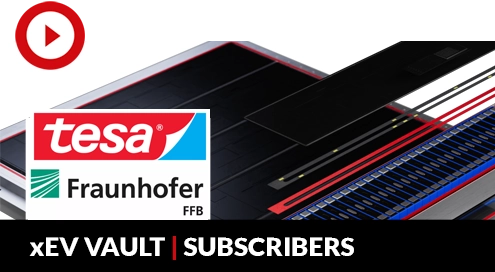
Enhancing Battery Stability: A Comparative Analysis of Cell Insulation Technologies

Dielectrics : How To Simplify Complexity And Mitigate Battery Fire Risk

Simulation-Driven Design Using Tapes And Adhesives

Advanced Technology For Characterizing EV Battery Materials

New And Innovated Approaches To Automating Your Bonding Solutions

Innovative Bonding And Sealing Technologies Focusing On Performance, Simplicity In Processes, And Sustainability

A Connected, Performance-Driven Electric Drive Development Process

Assessing Technologies For Dielectric Protection For Battery Cells And Cooling Plates

A Connected Process To Develop Battery And Fuel Cell Electric Vehicle Propulsion Systems
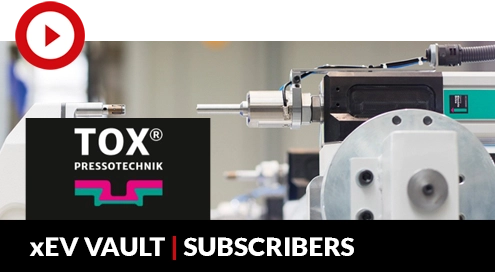
One Step Joining For Reliable Electrical Components: Cell-To-Cell With E-Clinching

Consequences of Extreme Climate and Weather Conditions on Li Battery Packs and How Adhesives Can Help Mitigate Them

Next-Gen LiDAR Concepts & Test Solutions

Boosting Performance of Battery Thermal Management Solutions

Lightweight Battery Potting & Encapsulation Compounds For Thermal Management

Exploring the Three Key Characteristics of Adhesive and Sealant Used to Construct More Robust Battery Packs
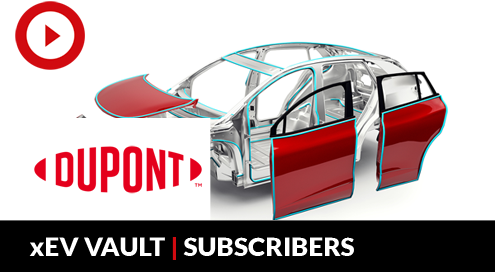
Battery Technology Roadmap: Material Science Solutions for Battery Pack Applications

How Pressure-Sensitive Adhesives Enable Advanced Thermal Runaway Barrier Design

Thermal Runaway and Propagation Testing Pitfalls

Battery Thermal Management For Commercial Electric Vehicles

Smart Weighing For Battery Manufacturing

Propagation Test Requirements For Repurposed EV Batteries

Enabling Simplicity In Battery Systems
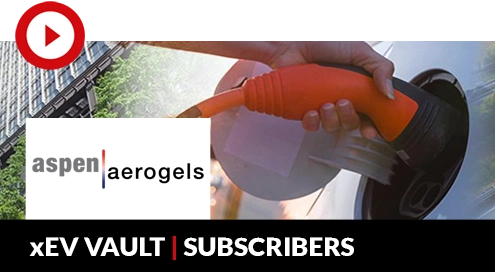
배터리 셀과 셀 사이의 열폭주 전이 현상을 지연시키지 말고, 정지하라
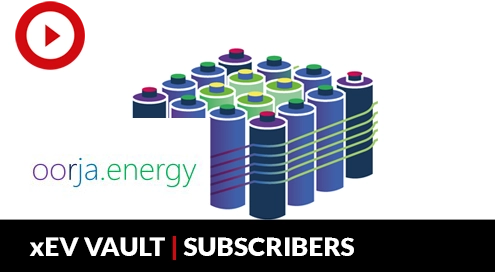
Degradation Prediction In Li-ion Batteries For BEVs

Enabling Sustainable High Performance Battery Systems

Advances In Thermally Conductive, Electrically Insulated Materials For E-Mobility Applications

Electrical Insulation: Design Challenges, Materials, Application & Optimization for ePowertrain

Finding the Sweet Spot: How to Balance Internal Forces Within a Module

How Molecular Design Of Thermal Interface Materials Can Benefit EV Battery Assembly

Latest Developments And Emerging Issues In Battery Thermal Runaway

Modeling Structural Adhesive Joints In Electric Vehicles

Pressure Sensitive Adhesive (PSA) Applications In E-mobility Applications

Automating Your Adhesive Application

Battery Interconnect Technology And Outlook

In Pursuit Of Silence Inside BEVs: The New Products Behind The Next Level Of Acoustic Comfort
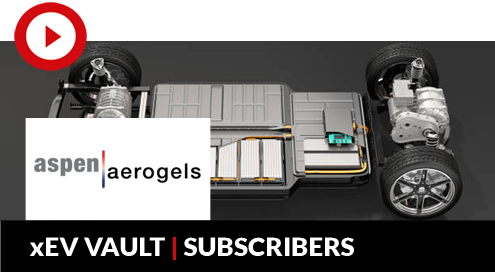
Don’t Just Delay Cell-to-Cell Thermal Propagation, Stop It

Liquid Cooling For EV Charging: How To Make Connections That Drive Performance & Reliability

Thermal Management & Bonding of Lithium Battery Cells & Modules

Thermal Conductive Adhesives For Next Generation Cell-to-Pack Configurations

Use Of Adiabatic Calorimetry In Battery Safety

Building Digital Twins Towards A Complete, Faster, Cost Effective & More Optimal Design Of Vehicles

Thermal Management Optimization For The Future Of Battery Designs

Improve Process Efficiency Through Thermal Adhesive Simulation For Tool Path Optimization & Module Assembly
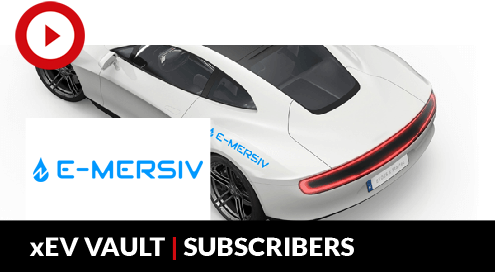
Battery Immersion Cooling: The Lightest And Safest Solution For EVs And HEVs

Engineering The Thermal & Safety Challenges In Next-Generation Battery Packs

Low Carbon Footprint Technologies For Automotive Acoustics And Battery Composites: The Key Enablers For Sustainable Mobility

The Basics Of UN 38.3 And The Requirements For The Transportation Of Lithium Batteries

Cell & Battery Abuse: Development Of Thermal Runaway / Propagation Tests For EV & Stationary Batteries

EVSE Charging And Safety Standards, Going Beyond Level 1 And 2

Future Of Water-Glycol Cooling In Electric Vehicles

Adhesive & Sealing Systems For High-Voltage Batteries In Electric Vehicle

Material Solutions For Module Integration For Cylindrical Cells

Enabling Smarter Battery Pack Design & Assembly Processes With Innovative Adhesive, Sealant & Thermal Technologies

Innovative Thermal Interface Materials: How Adhesives And Sealants Are Accelerating xEV’s

Propagation Control Strategies And The Use Of Flexible Graphite Heat Spreaders

Full System Solutions To Enable Battery Pack Assemblies With Innovative Adhesive & Thermal Management Solutions

Overcoming Technical & Cost Challenges For Next Generation Automotive Batteries

Understanding The Thermal And Safety Challenges In Next-Generation Battery Packs
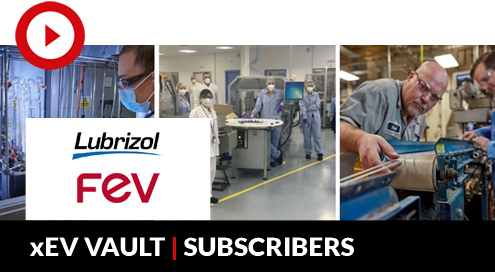
Why Immersed Battery Cooling

Monitoring Cell Temperature To Optimize Battery Performance And Design

Extending Battery Life of Electric Vehicle Fleets

Silicone Foams And Thermally Conductive Silicones In Battery Pack Assembly

Simulation To Aid Design: Accurately Predicting Thermal Performance And State Of Health Of A Battery Pack

Methodology For Modelling And Simulating Battery Thermal Runaway Events

Thermal Interface Materials – Gap Filler Liquids For Battery Systems

Specifying Thermal Management Solutions For Battery Pack Design

Battery Thermal Comfort: A Multi-Component Approach

EV Battery Pack Design And Material Selection For High Performing Batteries

Improved Methods For Leak Testing Li-Ion Batteries

Three Innovative Material Solutions To Address Technical Challenges In Automotive Electrification

Battery Connection Solutions In e-Mobility: 3 Distinct Technologies For Battery Manufacturing

Solving A Burning Issue: Dealing With Thermal Runaway

Driving Toward The BEV Tipping Point: Solving cost And Scalability Challenges

Upscaling Processes For New Battery Raw Materials From Laboratory Into Industrial Production

Breakthrough Silicon Anodes For Next-Gen EV Batteries

Material Options For Insulating And Protecting Power Distribution And Cooling Components In The Battery

Making The Next Super-Battery Solid-State Batteries

Efficient BMS Testing Throughout The BMS Development Lifecycle

Demystifying BMS Hardware-In-the-Loop (HIL) Testing

Methods For Leak Testing Lithium-ion Batteries

Thermal Propagation Prevention: Materials, Application, & Automation Techniques

How New Laser Technologies Can Help Advance Your Battery Manufacturing

Introducing Battery Intelligence: The Key To Powering Your Battery Program Through COVID-19 And Beyond

How To Advance Aluminum Laser Welding In Automotive Structures

EV Battery & Electrification Testing – From the Grid To The Road

Choosing The Right Scanner And Laser Solution In Battery Manufacturing

Using Clad Metal Innovations For Battery, Charging, And Thermal Management Challenges In Automotive Electrification

Powder Coating Solutions For Electric Vehicle Components

Innovative Solutions & Performance Materials For Lithium Ion Battery Packs

EV Battery Simulation, Accurately Predicting Performance & State Of Health

Upscaling Processes For New Battery Raw Materials From Laboratory Into Industrial Production

COVESTRO: New Ways To Manage Heat – Makrolon® TC

H.B. Fuller’s Innovative Materials For EV Batteries

Hybrid Electronic Control Technology For HV DC Switching

Battery Pack Material Selection & Design For Scaled Mass Production

Pressure Sensitive Adhesive (PSA) Applications In Li-ion Battery Assembly Processes

Laser Solutions For Demanding Battery Manufacturing Applications

Increasing Thermal Transfer In EV Batteries Through The Use Of Openair-Plasma® Technology

Engineering The Thermal & Safety Challenges In Next-Generation Battery Packs

Testing Battery Sensitivities of EV Subsystems Using Battery Simulation And Hardware-In-the-Loop (HIL) Techniques

Technical Manufacturing Audits Of Cell Manufacturers

Translating FTRC Results Into Practical Thermal Analysis Techniques

Why Is The Ultra-Thin Heating Polyimide Film The Best Value Solution For Battery Warm Up?

Robust Early Detection Of Thermal Runaway (REDTR)

Sensor Optimization For Effective Thermal Management And HP/HX Control For xEV And Stationary Storage Batteries

Liquid Cooling For EVs – Cooling Strategies & Avoiding Issues For Reliable Fast Charging Electric Vehicles

Safer, Cooler, Faster, And Farther – Adhesives For Thermal Solutions In EV Battery Packs

Innovative Material Solutions To Address Electric Vehicle Safety & Thermal Management Challenges

Cell & Battery Abuse: Development Of Thermal Runaway/Propagation Tests For EV & Stationary Batteries

Thermal Propagation Control Strategies and the Use of Flexible Graphite Heat Spreaders

Staying Cool – Thermal Management When No Two Battery Packs Are The Same

EV Battery Design for Manufacturability: Process to Production

Temperature Counts: Increasing xEV Safety, Comfort, Range And Performance With NTC Sensors

Next Generation Silicone Solutions for xEV Battery Challenges

Integration Of The Battery Casing With The Cooling Plate, Enabled By A Coolant-Resistant Structural Adhesive

Innovations In Electric Vehicle Cooling Technologies

Sensor Design And Optimization For xEV, EVSE, And ESS Thermal Management

EV Battery Design for Manufacturability: Thermal Management Troubleshooting

How Adhesives Material Science Can Support Sustainability Goals For Automotive

Review Of Battery Cooler Brazing Development: Case Study

Sustainability In The E&E Industry – Material Solutions For A Circular Economy

Battery Intelligence Systems (BIS)

Designs & Material Solutions For Future EV Charging Stations

Fast Dispensing Liquid Gap Fillers Aligned With Mass Production Of EV’s

New Demands And Applications For Polymer Optics In General And Automotive Lightings

A New Coating For Lithium-ion Batteries

Dealing With Thermal Runaway

Adhesive Solutions For Efficient Li-ion Battery Architecture Assembly

Examining The Latest Developments In Fast Charging And Impact On Battery Thermal Management Systems
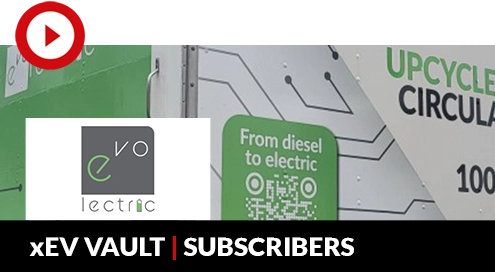
Increased Virtualisation In Battery Pack Design

Matching Battery Thermal Management Systems To More Powerful Batteries To Improve The Energy Storing Capabilities of BEV’s
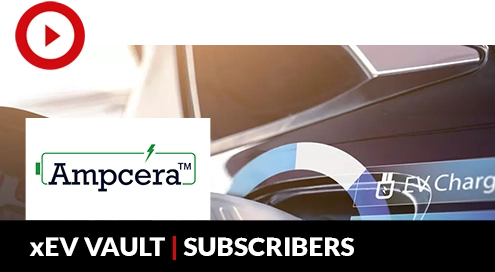
Solid-State Technology – What Are The Thermal Management implications?

Next-Generation, Environment-Friendly Thermal Solutions For EV Batteries

Exploring Difference Cooling Strategies For Fast Charging And High Performance Electric Vehicles

Fast Charging & Batteries Of The Future: What Will Be The Impact Of Fast Charging On Battery Thermal Management?

Fast Charging & Batteries Of The Future: What Will Be The Impact Of Fast Charging On Battery Thermal Management?
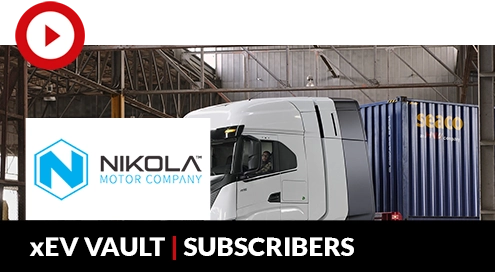
Improving Energy Density And Performance Of EV Battery Packs With Thermal Management And Coatings

Analysis And Modelling Of The Vehicle Thermal Management System (VTMS) For Battery Electric Vehicles

Building Digital Twins Towards A Complete, Faster, Cost Effective & More Optimal Design Of Vehicles

Consequences Of Extreme Climate And Weather Conditions On Li Battery Packs And How Adhesives Can Help Mitigate Them

Battery Systems And Sealing Solutions

New Mobility DC Under Control
WeAutomotive Group delivers unique, high-value, content-lead technical agendas and networking forums for the Electric Vehicle Sector.



Chat: Set private and group panellist chat settings for attendees and panellists
Q&A And Polling: Manage and share audience input in Q&A dialog box where attendees ask questions, either live audibly or text answers
Attendee “Raise Hand”: Increase attendee engagement by allowing virtual hand-raising
Attention Indicator: Track how engaged your audience is with your content and which viewers show the most interest
![]()
HD Video And Audio
Multiple live video presenters and panellists can share their webcam and interact with the audience; If you’d prefer, you can remain unseen, or just post a profile picture.
![]()
Live Broadcasting
We can broadcast live across all social media channels including Facebook Live, YouTube and LinkedIn integrations.
![]()
Full Featured Host-Controls
Mute/unmute panellists, and promote attendee to panellist, giving them audio and video capabilities for enhanced engagement.
![]()
Reporting & Analytics
Get reports on registrants, attendees, polling, engagement levels and Q&A for follow up.
![]()
On-Demand Viewing
Host larger-scale events with help from our team, including planning, rehearsal and live support.

